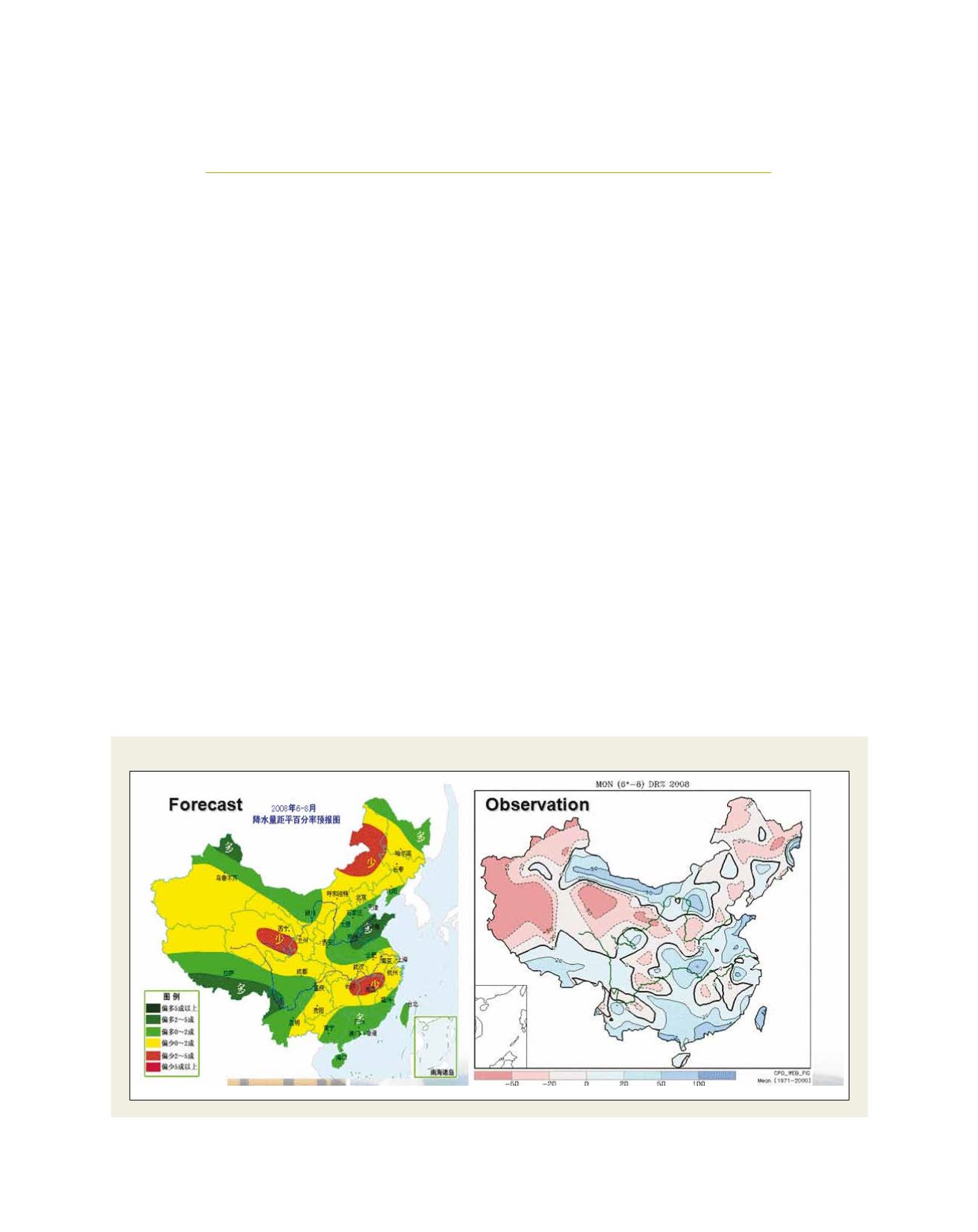

[
] 264
China’s climate prediction services
Beijing Climate Center, China Meteorological Administration, China
C
hina has a large territory with diverse landforms, and it is
exposed to the impacts of various meteorological disasters
including heavy rain-induced flash floods and geological
disasters, droughts, typhoons, frosts, cold temperature, wind,
hailstones, heavy fog, and sand and dust storms. In the context
of global warming, the higher frequency and greater intensity of
extreme events has caused mounting losses from meteorologi-
cal hazards and secondary disasters as China faces increasingly
higher disaster risks. In 2010 and 2011, the economic losses
caused by meteorological disasters were more than CNY500 and
CNY300 billion respectively, and both were higher than normal.
China is located in the East Asia monsoon zone. Being subject to the
impacts of the monsoon, the winter in China is relatively dry and its
summer has abundant precipitation as the main rainy season in the
year. Abnormal precipitation may lead to frequent meteorological
hazards and secondary disasters. As the main rainfall areas can vary
largely from year to year, droughts and floods can have different
impacts on different regions. Bearing this in mind, it is particularly
necessary to make precipitation predictions for the flood-prone
season each year, which serve as important information in support
of disaster prevention, preparedness and mitigation. On the other
hand, China’s agriculture is an important foundation of its national
economy, and climate predictions are closely related to agricultural
services. This linkage also determines the necessity for
making climate predictions in China.
Climate prediction services
Climate prediction services involve almost all aspects
of meteorological hazards, and most prominently
floods and droughts. During a flood-prone season, the
first question to be addressed is whether or not severe
floods are likely to occur in China’s major river basins,
and this is the focus of the flood predictions. The major
customers of these specific basin-wide flood predic-
tions are water resource and hydropower authorities.
These predictions allow them to prepare for potential
floods, and provide science-based information that
will enable them to schedule their water- and electric-
ity-related activities.
China’s climate prediction services pay close atten-
tion to agriculture, with predictions closely linked
to the processes of spring sowing, summer planting,
autumn sowing and frost prevention. In summer,
drought prediction mainly addresses questions of
whether or not significant droughts are likely to occur
in China’s major grain producing areas. As the occur-
rence of low temperature episodes or persistent cold
C
apacity
D
evelopment
Source: BCC
The summer rainfall anomaly percentage in 2008: forecast (left) and observations (right)
















